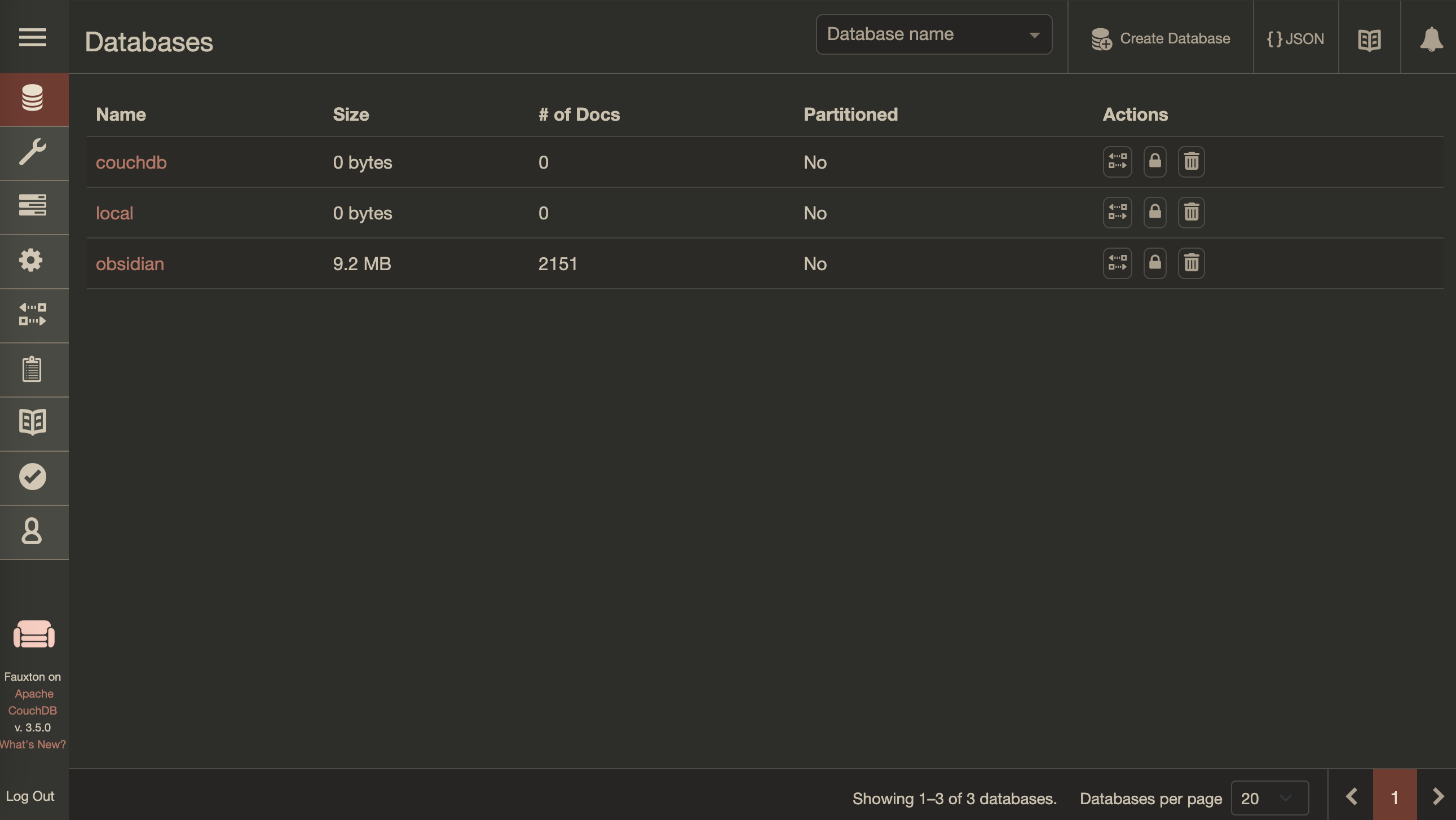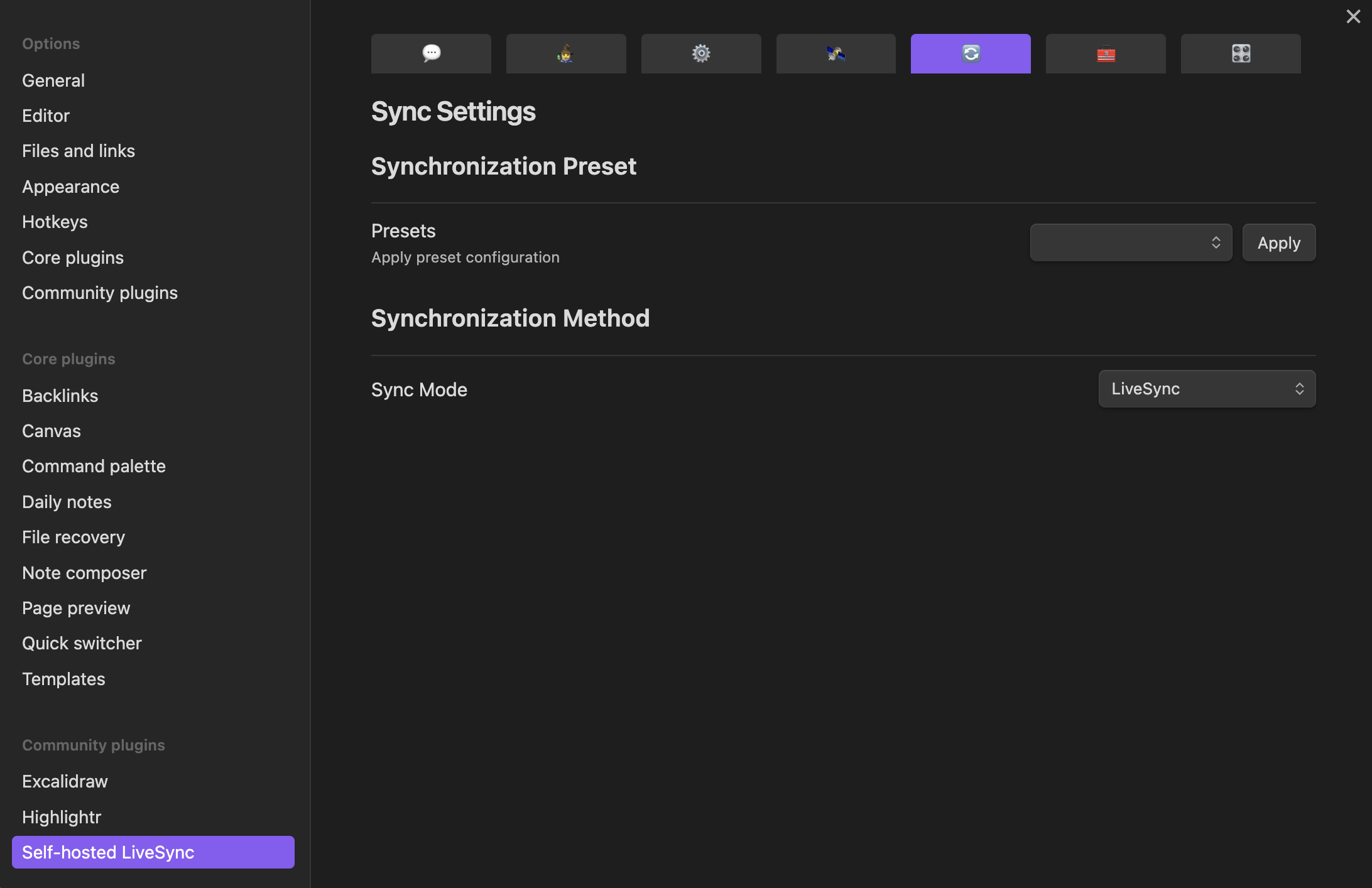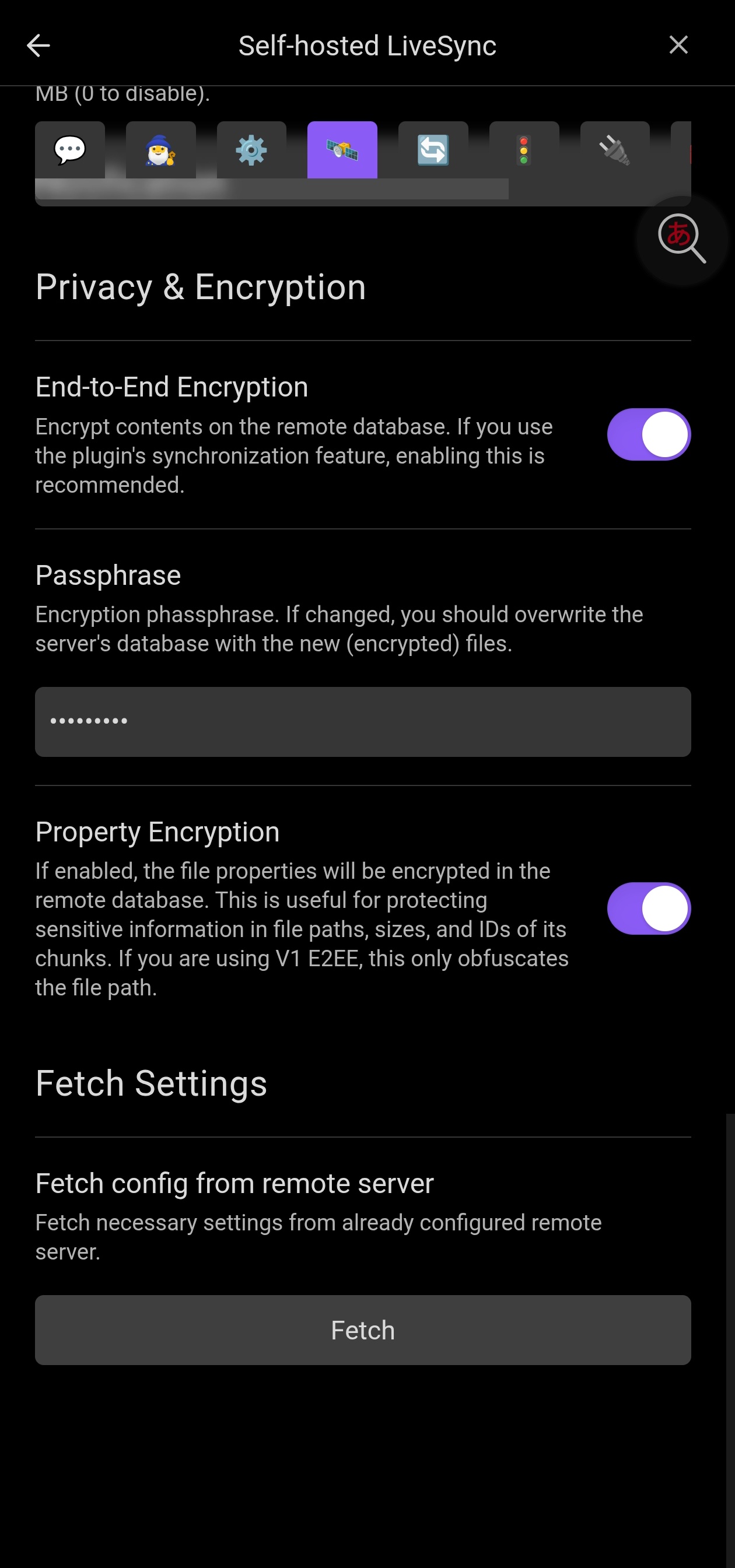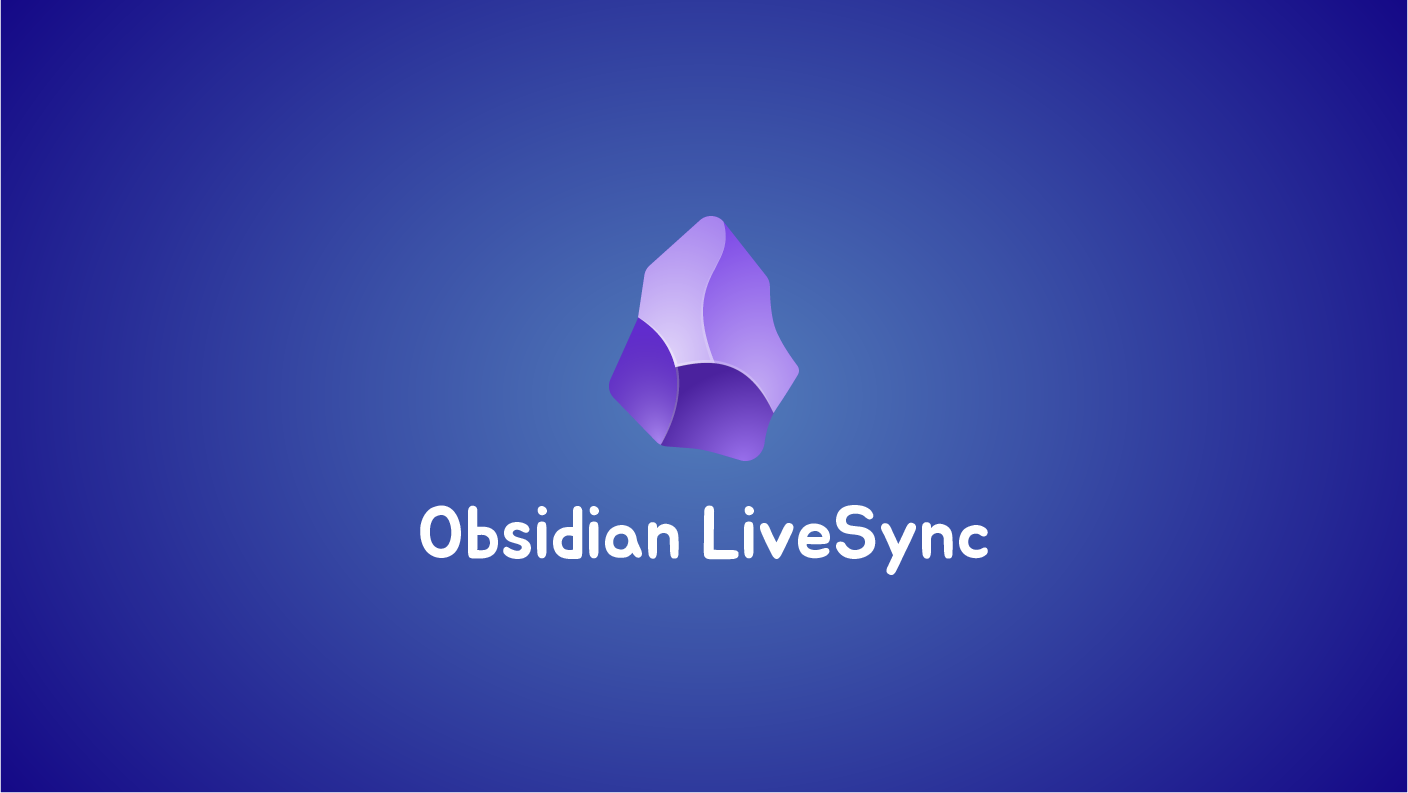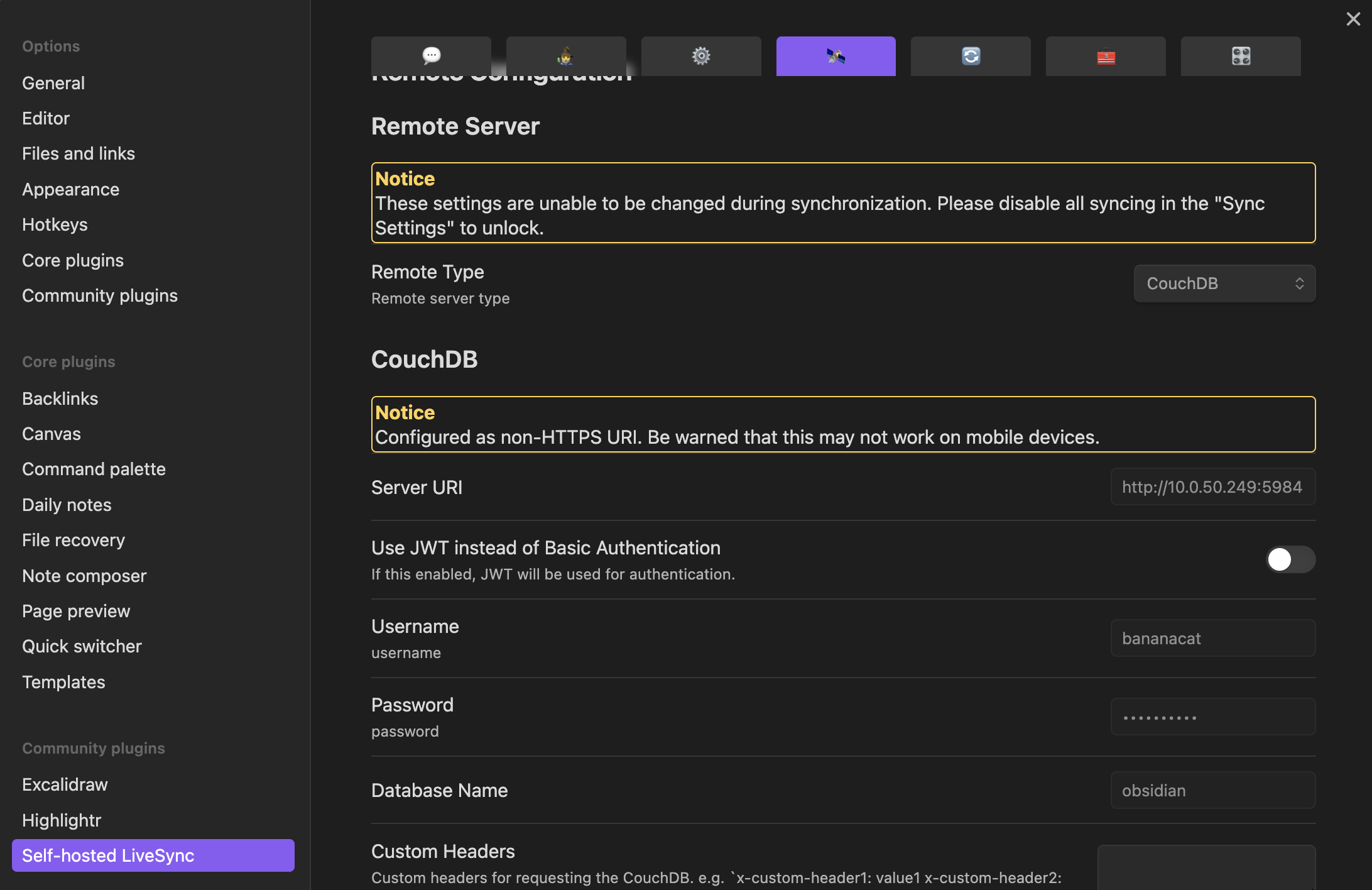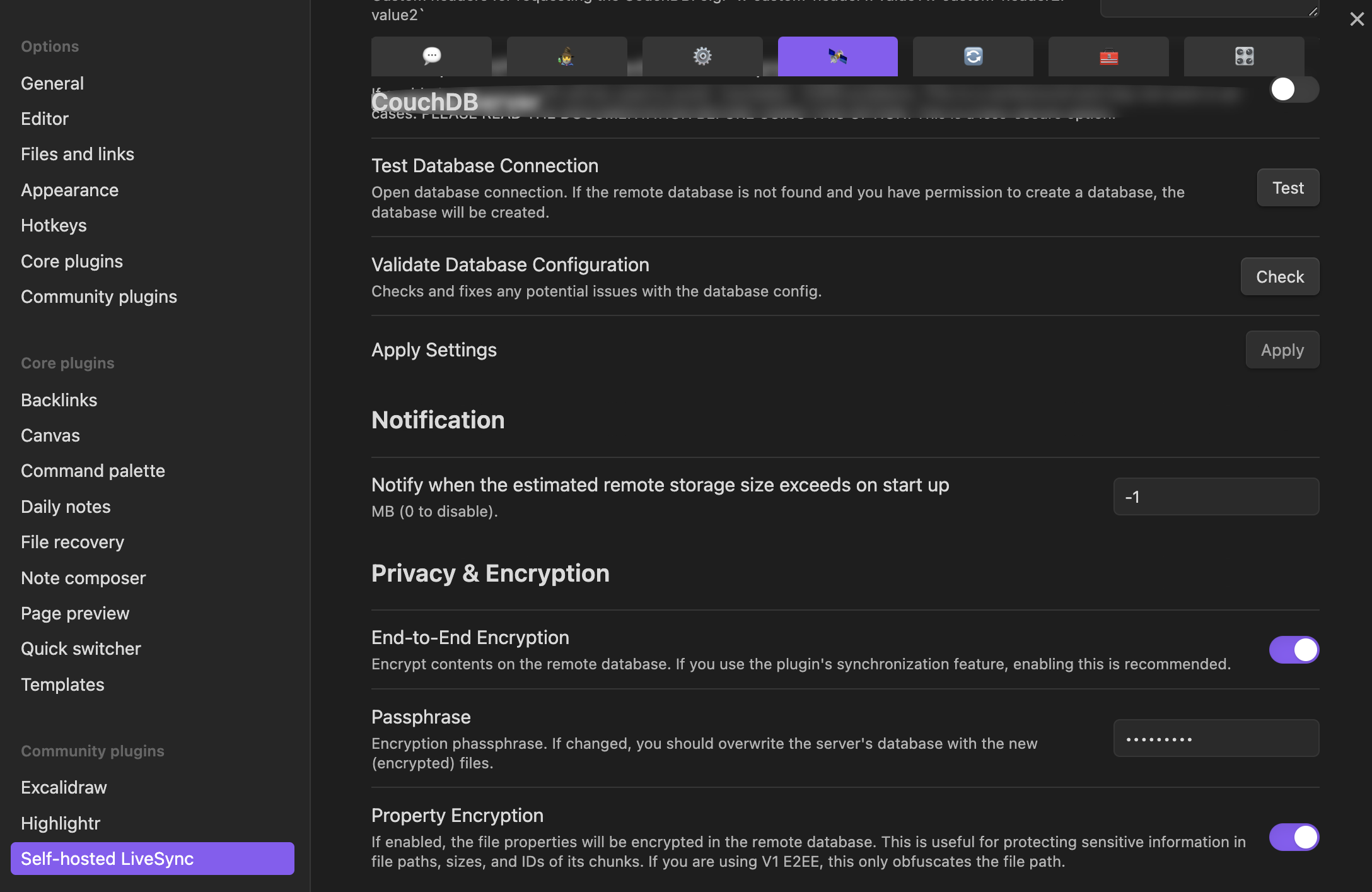Deploy locally
- Prepare
1
2
3
| # Creating the save data & configuration directories.
mkdir couchdb-data
mkdir couchdb-etc
|
- Create a
compose.yml file with the following added to it
without proxy
1
2
3
4
5
6
7
8
9
10
11
12
13
| services:
couchdb:
image: couchdb:latest
container_name: couchdb-for-ols
environment:
- COUCHDB_USER=<INSERT USERNAME HERE> #Please change as you like.
- COUCHDB_PASSWORD=<INSERT PASSWORD HERE> #Please change as you like.
volumes:
- ./couchdb-data:/opt/couchdb/data
- ./couchdb-etc:/opt/couchdb/etc/local.d
ports:
- 5984:5984
restart: unless-stopped
|
with Traefik
1
2
3
4
5
6
7
8
9
10
11
12
13
14
15
16
17
18
19
20
21
22
23
24
25
26
27
28
29
30
31
32
33
34
35
36
37
38
39
40
41
| services:
couchdb:
image: couchdb:latest
container_name: obsidian-livesync
environment:
- COUCHDB_USER=username
- COUCHDB_PASSWORD=password
volumes:
- ./data:/opt/couchdb/data
- ./local.ini:/opt/couchdb/etc/local.ini
# Ports not needed when already passed to Traefik
#ports:
# - 5984:5984
restart: unless-stopped
networks:
- proxy
labels:
- "traefik.enable=true"
# The Traefik Network
- "traefik.docker.network=proxy"
# Don't forget to replace 'obsidian-livesync.example.org' with your own domain
- "traefik.http.routers.obsidian-livesync.rule=Host(`obsidian-livesync.example.org`)"
# The 'websecure' entryPoint is basically your HTTPS entrypoint. Check the next code snippet if you are encountering problems only; you probably have a working traefik configuration if this is not your first container you are reverse proxying.
- "traefik.http.routers.obsidian-livesync.entrypoints=websecure"
- "traefik.http.routers.obsidian-livesync.service=obsidian-livesync"
- "traefik.http.services.obsidian-livesync.loadbalancer.server.port=5984"
- "traefik.http.routers.obsidian-livesync.tls=true"
# Replace the string 'letsencrypt' with your own certificate resolver
- "traefik.http.routers.obsidian-livesync.tls.certresolver=letsencrypt"
- "traefik.http.routers.obsidian-livesync.middlewares=obsidiancors"
# The part needed for CORS to work on Traefik 2.x starts here
- "traefik.http.middlewares.obsidiancors.headers.accesscontrolallowmethods=GET,PUT,POST,HEAD,DELETE"
- "traefik.http.middlewares.obsidiancors.headers.accesscontrolallowheaders=accept,authorization,content-type,origin,referer"
- "traefik.http.middlewares.obsidiancors.headers.accesscontrolalloworiginlist=app://obsidian.md,capacitor://localhost,http://localhost"
- "traefik.http.middlewares.obsidiancors.headers.accesscontrolmaxage=3600"
- "traefik.http.middlewares.obsidiancors.headers.addvaryheader=true"
- "traefik.http.middlewares.obsidiancors.headers.accessControlAllowCredentials=true"
networks:
proxy:
external: true
|
- Run the Docker Compose file to boot check
Go to CouchDB admin page
Go to your server ip eg. http://192.168.1.0:5984/_utils, login with your credentials created in compose file.
- You will see your db in CouchDB
Open Obsidian apps and browse the LiveSync plugin
- Click Option and setup your connection.
Server URI, Username, Password, Database Name
Test Database Connection, Encryption
- Synchronization Method i. Change Live Sync method
Install Obsidian on mobile
- Create a new vault and install the LiveSync plugin and configure the connection. The same setting in desktop side, then click Fetch button Fetch Settings.
Done! It will sync the notes in live.
ref link: https://github.com/vrtmrz/obsidian-livesync
